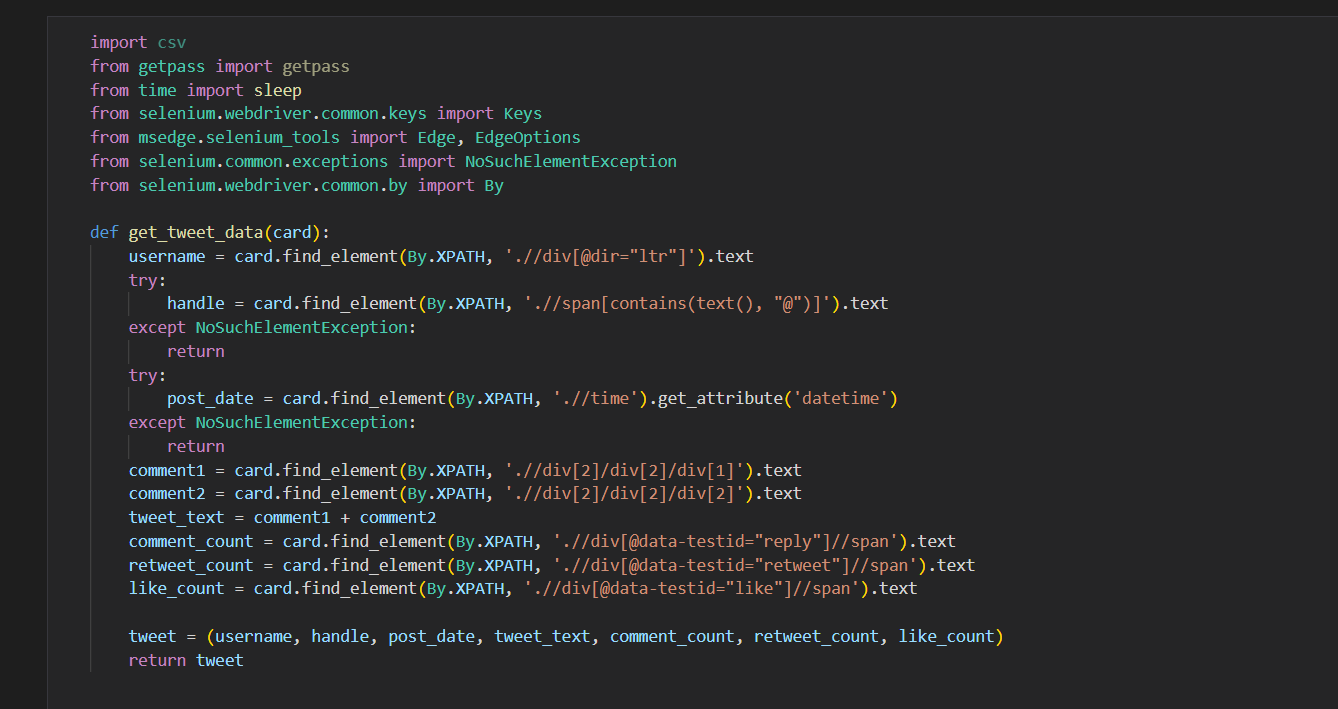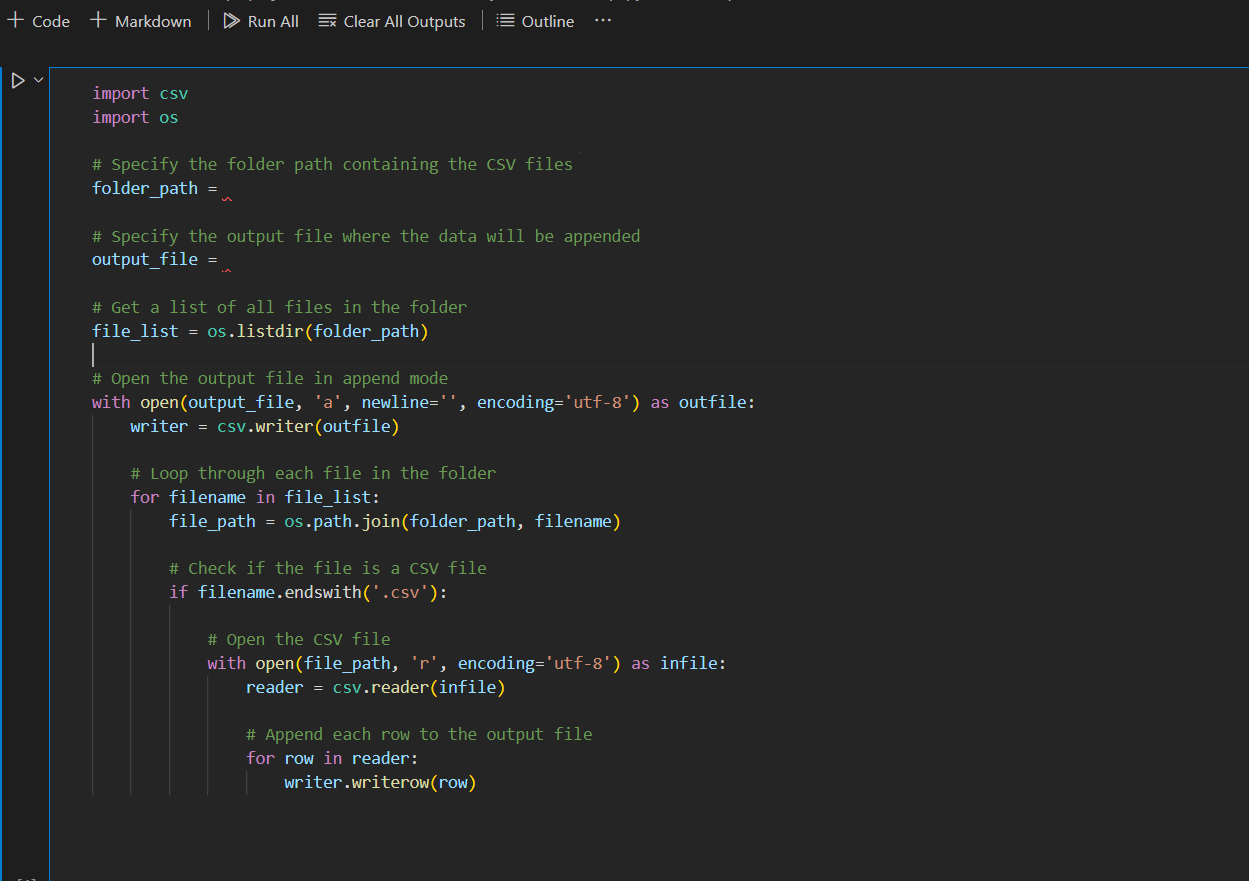AI sentiment Analysis
About
Objective:
The primary goal of this project was to utilize web scraping techniques to extract valuable data and generate unique datasets.
Web Scraping with Python:
Using the Selenium library in Python, I successfully built a web scraper.

This process involved extracting information from multiple sources.
Data Compilation:
To consolidate the extracted data, I employed the Pandas library in Python.
By appending all the separate CSV files into a single file, I ensured a comprehensive and organized dataset for further analysis.

Data Cleaning:
Once the data collection phase was completed, I utilized Python once again, this time leveraging the power of the Pandas library along with regular expressions to clean the dataset.

Sentiment Analysis:
To gain deeper insights into the data, I employed the Natural Language Toolkit (NLTK) to extract sentiment scores for each tweet.

Additionally, I created a unique ID column to link the sentiment scores back to the respective tweet texts.
Data Visualization with Power BI:
After preparing the data and extracting sentiment scores, I utilized Power BI to create compelling visualizations.
These visual representations provided valuable insights into the sentiment patterns and trends observed within the AI-related tweets.
Click Here for the dataset and python scripts